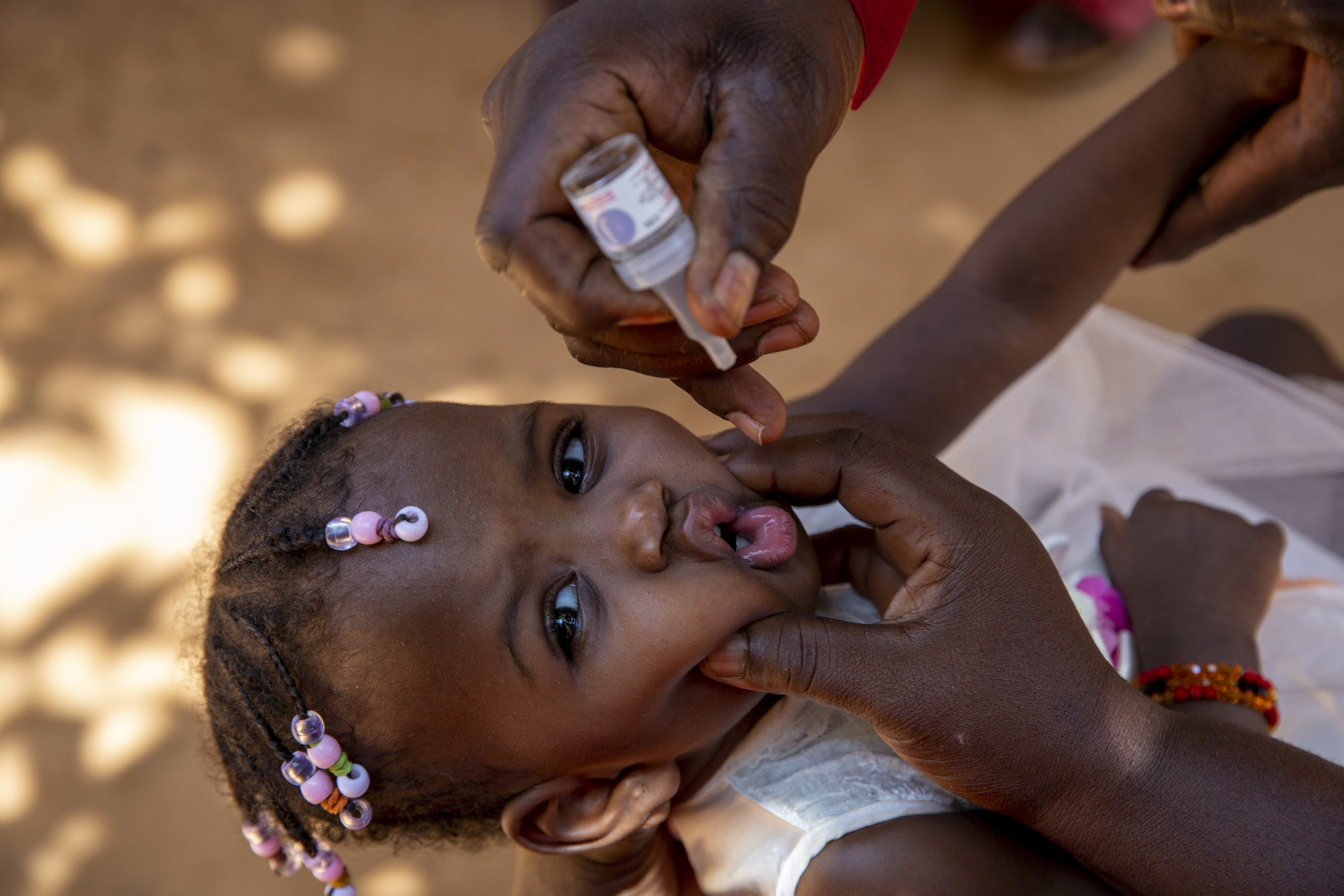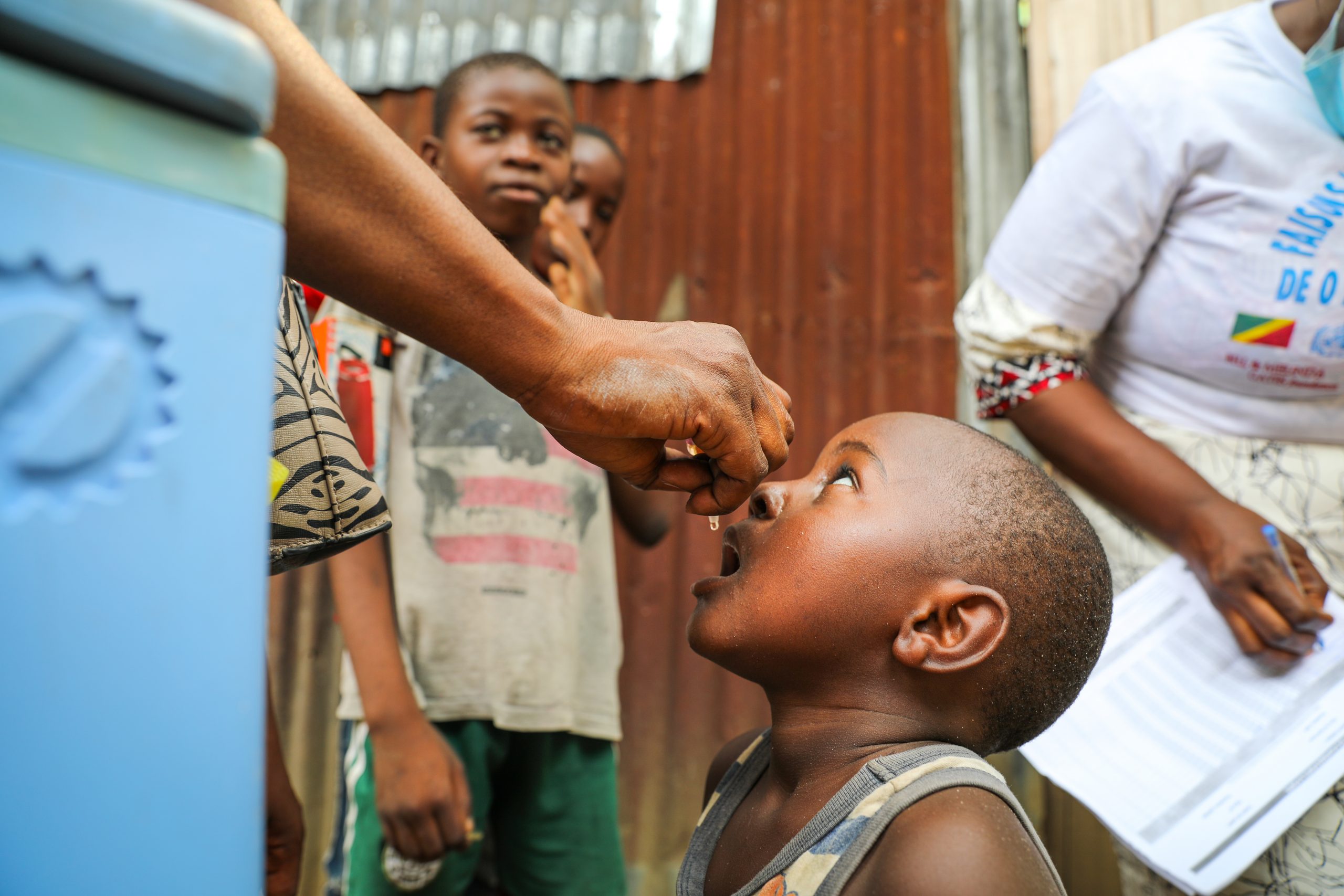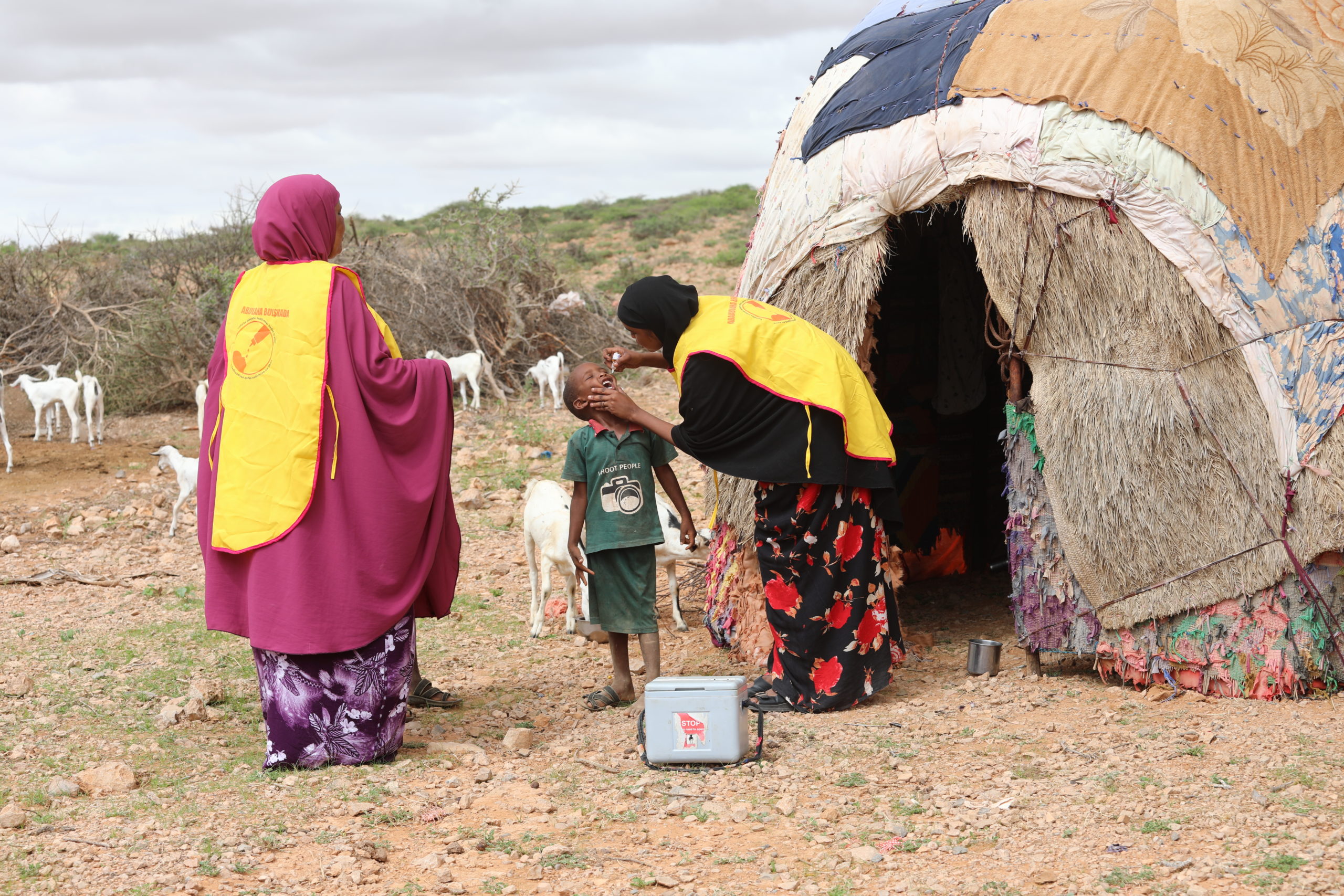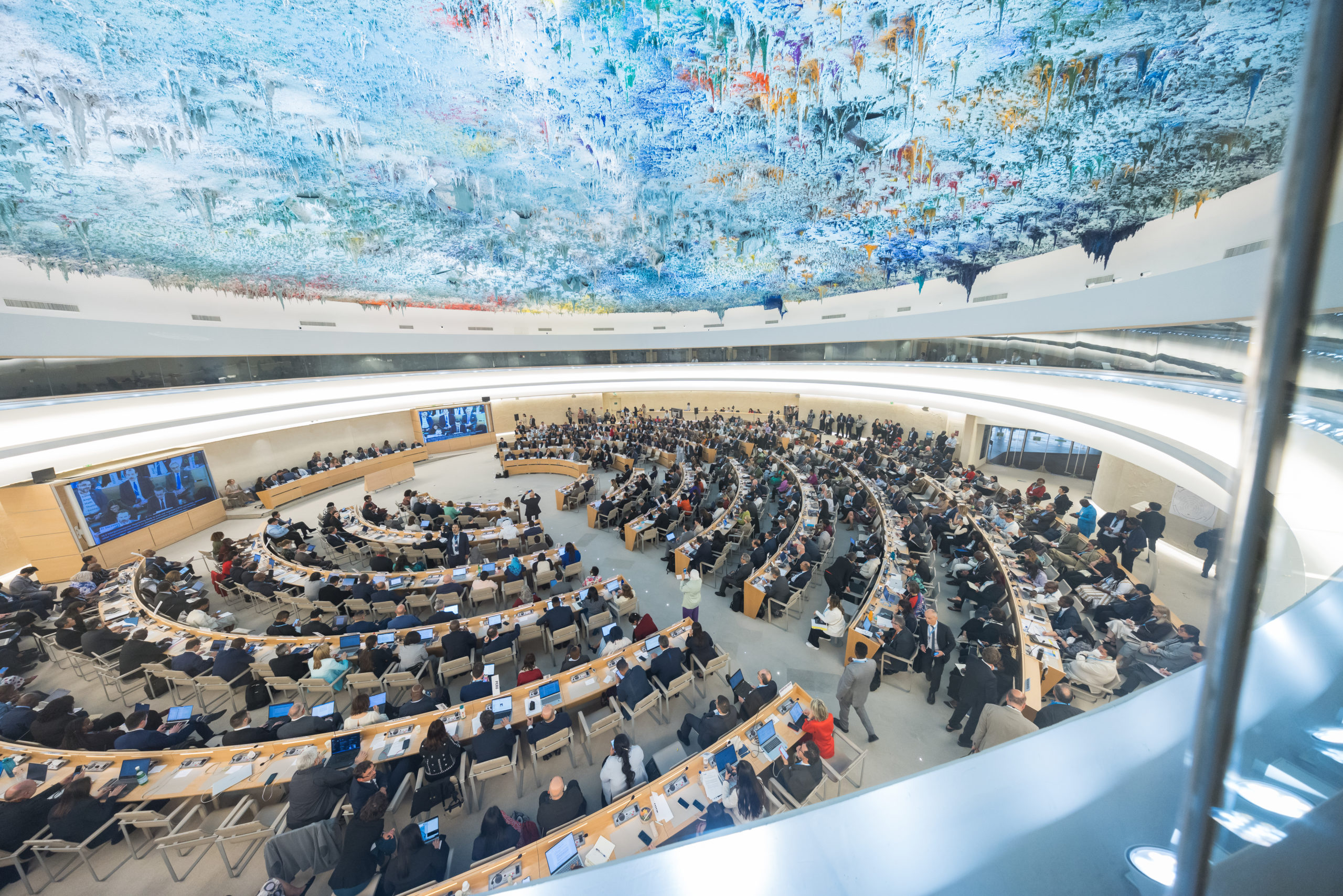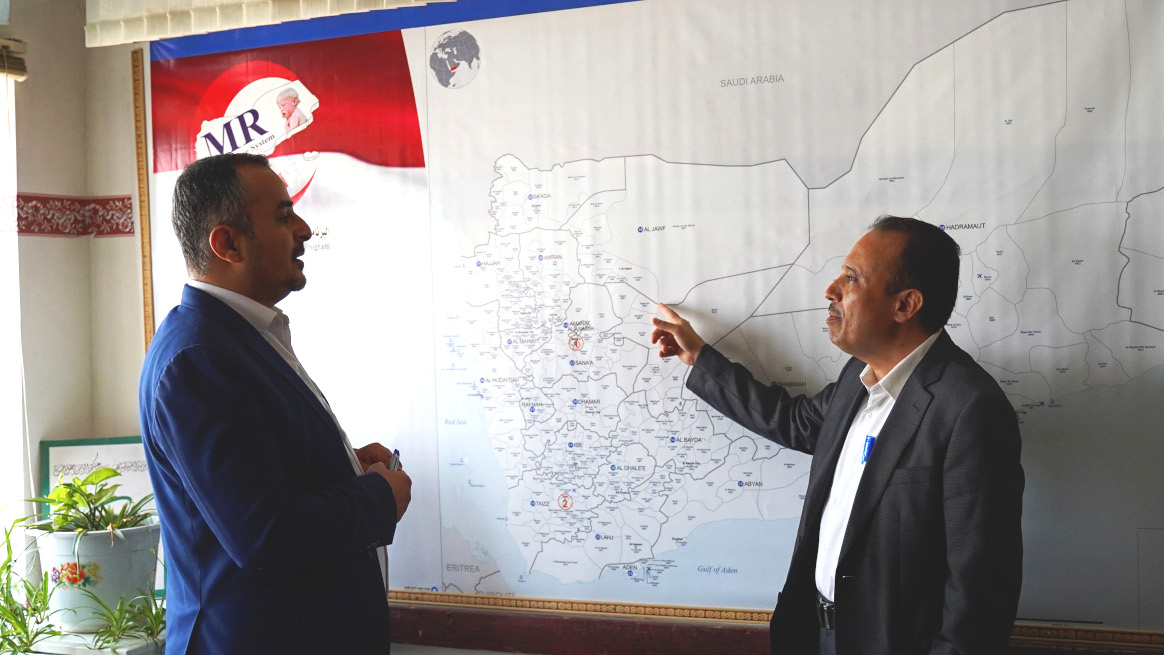
At his office in Sana’a, Yemen, Dr Mutahar Ahmed stands before a wall-sized map of his country and feels the weight of the world on his shoulders.
“The situation here in Yemen is very complex, and the problems we face are quite immense,” said Dr Ahmed.
As Yemen’s national surveillance coordinator, Dr Ahmed leads the country’s acute flaccid paralysis (AFP) surveillance efforts, the primary means of tracking poliovirus transmission. With an explosive outbreak of circulating vaccine-derived poliovirus type 2 having paralysed 115 children and counting, and with swathes of the country’s infrastructure – from roads to hospitals – decimated by conflict, you’d be forgiven for thinking that his and his team’s efforts to surveil for poliovirus were falling short or otherwise compromised. But you’d be wrong.
In Yemen, despite a long-running conflict and complex humanitarian disaster that has significantly impacted health care, AFP surveillance indicators tell a promising story of a functioning system where case detection, sample collection and laboratory analysis – the steps that enable us to detect poliovirus so we can respond to it – are, in fact, on track.
Surveillance data allows the polio programme to identify new AFP cases and to test those cases to determine whether polio infection is the cause. In this way, a robust and wide-reaching AFP surveillance system enables health workers to detect the presence and circulation of poliovirus.
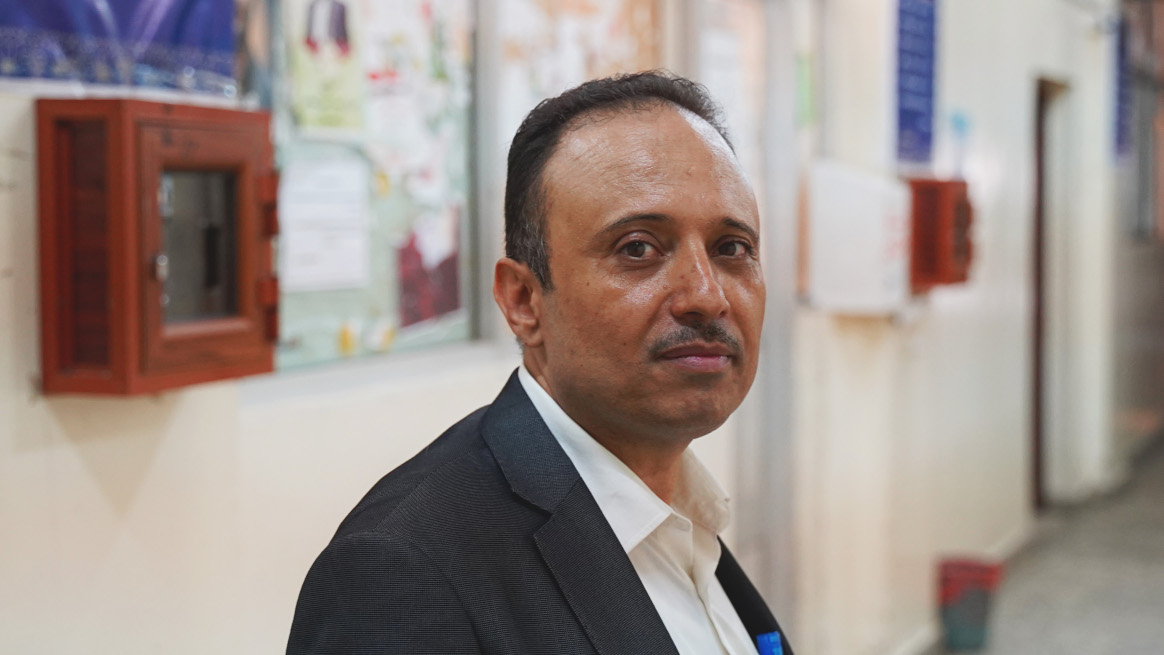
“In addition to our work building the engagement and knowledge of pediatricians and clinicians, we are reaching the community and community-based health care providers including traditional healers. We also appeal to families for their support in reporting cases. The more aware they are of the symptoms of paralysis in a child, the quicker our surveillance coordinators can collect the stool sample for analysis,” said Dr Ahmed.
Early detection of symptoms such as AFP is a crucial step in the chain of polio surveillance. If a case of paralysis is not reported within the first 14 days of the onset of symptoms, the reliability of testing the sample in the lab reduces significantly. In Yemen, the AFP surveillance system in high-risk districts is supported by volunteers trained in community-based surveillance. In 2021, 82% of AFP cases were detected early, within the first seven days of the onset of paralysis, which is above the global target of 80%.
Once a case is detected and stool samples are collected, it’s vital to make sure the samples reach the laboratory in good condition.
“Two stool samples are required from each child showing symptoms of paralysis. Both samples need to be collected within the first 14 days, 24 hours apart. They need to be correctly labelled, and their temperature needs to be maintained at between 2 and 8 degrees. Otherwise, they are not adequate samples,” said Dr Ahmed.
In 2021, 921 AFP cases were detected. Of these cases, 87.84% had adequate specimens collected, which is above the global target of 80%.
Along with stool adequacy, another key performance indicator for surveillance is the non-polio AFP rate. This refers to the detection of diseases, other than polio, that can cause AFP. Yemen’s non-polio AFP rate is 5.96 per 100,000 children aged below 15 years in 2021, significantly higher than the global standard of three per 100,000 for polio outbreak countries like Yemen. This accomplishment points to the sensitivity of Yemen’s surveillance system due to the relentless efforts and commitment of the surveillance personnel working with Dr Ahmed.
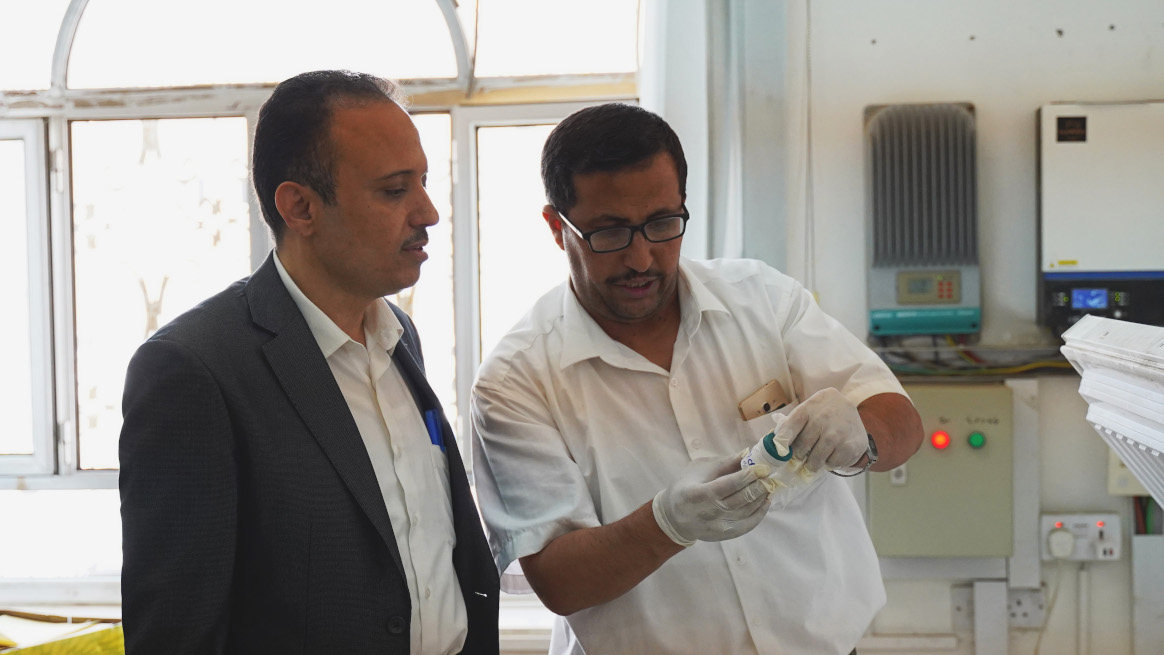
Due to electricity shortages, maintaining the cold chain (keeping vaccines cold) and reverse cold chain (keeping stool samples cold) poses a significant challenge for the programme. To overcome this and further increase the efficiency and sensitivity of the surveillance system to detect polioviruses as quickly as possible, solar power panels have been installed in health facilities at the central and governorate levels to support the storage and transfer of stool samples. One indicator of the impact of this change is Yemen’s non-polio enterovirus rate, which tells us what percent of stool samples tested negative for poliovirus, but were in such condition that they could still test positive for enteroviruses. In 2021, that rate was 20 percent above the global target of 10 percent.
Because Yemen does not have a poliovirus laboratory in-country for testing, samples are first collected at the central level in Sana’a and then sent by road to Muscat, Oman. The journey can take up to seven days, barring any obstacles or emergencies.
“Working in this role is a challenge, but what I particularly enjoy is how we are able to turn these challenges into opportunities for the AFP surveillance programme. The AFP indicators for the last year show us how far we have come in our journey,” said Dr Ahmed.
He explained why these indicators are so critical to the polio programme.
“The fact that our indicators are above the minimum global standards shows that the surveillance system is functioning, sensitive and responsive, despite the critical humanitarian situation. The data from our surveillance work has helped us identify the outbreak of circulating vaccine-derived polioviruses type-1 and type-2. The situation is quite fragile, but we are committed to addressing these challenges, and we will continue to do so.”
WHO has supported Yemen to establish an environmental surveillance system to supplement its AFP surveillance system and support early detection of polioviruses and more timely responses.
